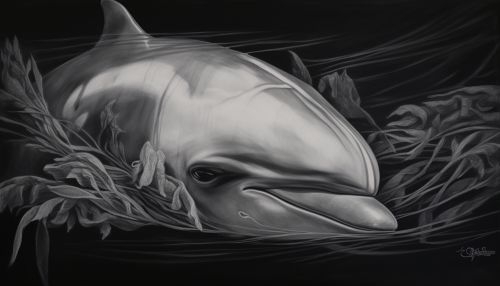Neurobiological Mechanisms of Sleep in Aquatic Mammals
Overview
Sleep is a universal phenomenon observed in almost all animals, including aquatic mammals. The neurobiological mechanisms of sleep in these animals are a fascinating area of study, given the unique challenges they face in maintaining sleep while living in an aquatic environment. This article delves into the intricate details of these mechanisms, exploring the various adaptations and strategies aquatic mammals employ to sleep underwater.
Sleep in Aquatic Mammals
Aquatic mammals, such as dolphins, seals, and whales, exhibit unique sleep patterns that differ significantly from terrestrial mammals. These animals have evolved various strategies to cope with the challenges of sleeping in water, such as the need to surface for air, avoid predators, and maintain body temperature.


Unihemispheric Slow-Wave Sleep
One of the most fascinating adaptations is Unihemispheric Slow-Wave Sleep (USWS), a sleep state where one hemisphere of the brain is asleep while the other remains awake. This allows the animal to continue swimming, surfacing for air, and keeping an eye out for predators while still getting rest. Dolphins, seals, and certain species of whales are known to exhibit USWS.
Neurobiology of Unihemispheric Slow-Wave Sleep
The exact neurobiological mechanisms underlying USWS are not entirely understood. However, it is believed that the asymmetrical release of neurotransmitters plays a crucial role. The awake hemisphere releases wake-promoting neurotransmitters, while the sleeping hemisphere releases sleep-promoting neurotransmitters.
Sleep and Breathing
Unlike terrestrial mammals, aquatic mammals must consciously control their breathing. This presents a unique challenge during sleep. To overcome this, aquatic mammals have evolved a reflex that allows them to surface for air even while asleep. The neurobiological mechanisms underlying this reflex are not fully understood, but it is believed to involve the brainstem and the autonomic nervous system.
Sleep and Thermoregulation
Maintaining body temperature is another challenge for aquatic mammals during sleep. To cope with this, these animals have developed various strategies, such as sleeping near the surface where the water is warmer, and using blubber for insulation. The neurobiological mechanisms underlying these strategies are complex and involve various parts of the brain and endocrine system.
Conclusion
The neurobiological mechanisms of sleep in aquatic mammals are a complex interplay of various factors, including the need to surface for air, avoid predators, and maintain body temperature. These mechanisms are not fully understood and continue to be an active area of research. Understanding these mechanisms could provide insights into sleep disorders in humans and other animals.
